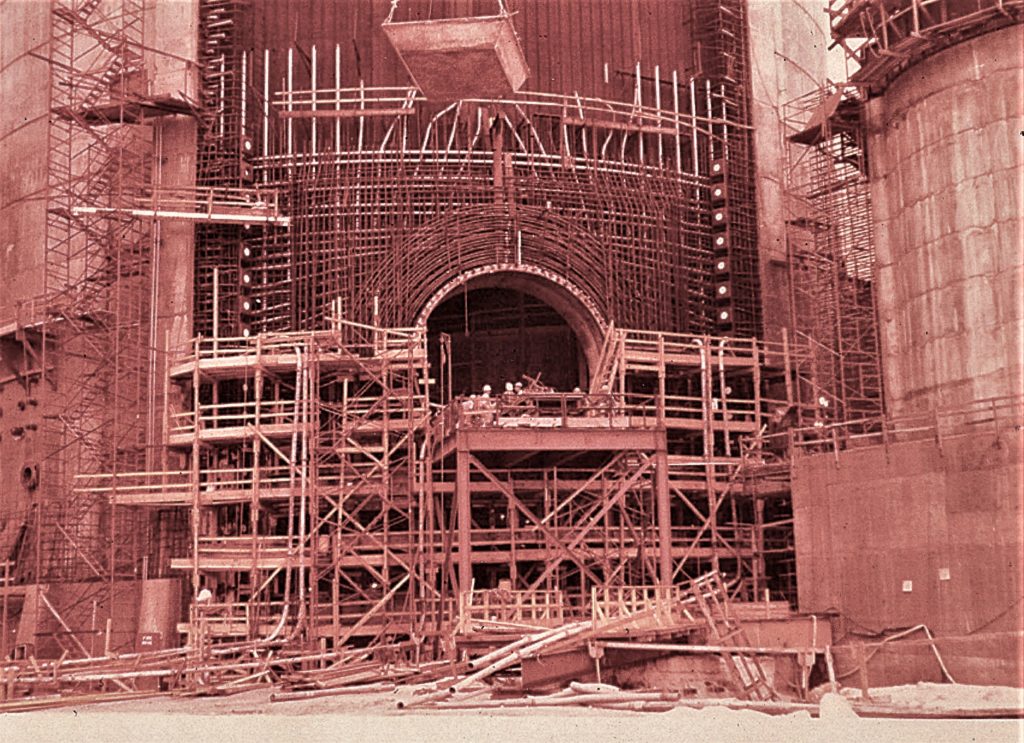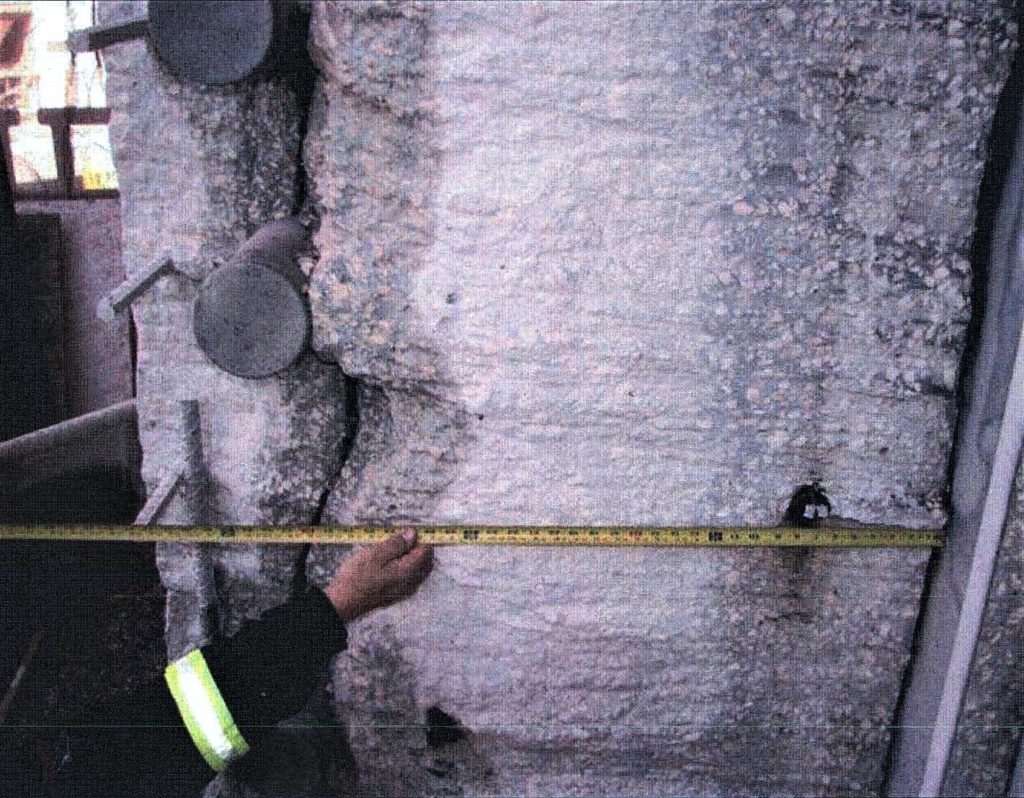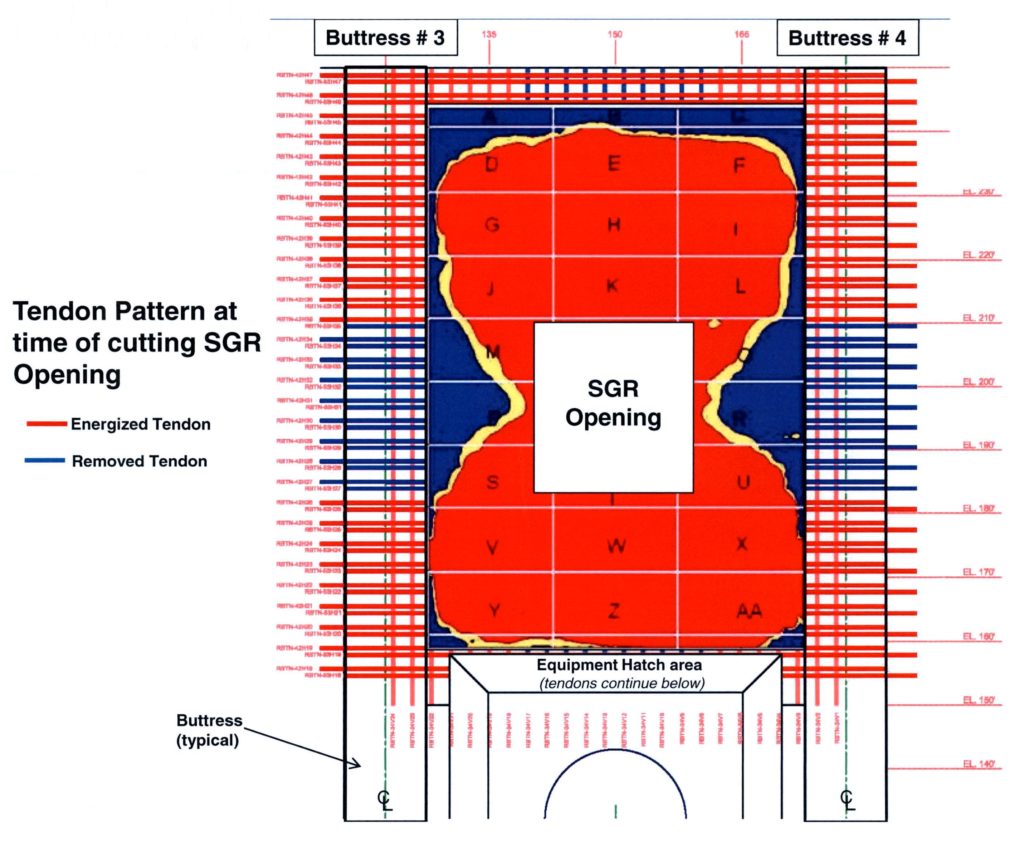Role of Regulation in Nuclear Plant Safety #10
The Crystal River 3 pressurized water reactor in Florida was shut down in September 2009 for refueling. During the refueling outage, the original steam generators were scheduled to be replaced. The Nuclear Regulatory Commission (NRC) was reviewing the owner’s application to extend the reactor operating license for another 20 years. The replacement steam generators would enable the reactor to operate through the end of its current operating license period as well as to the end of a renewed license.
But those plans changed drastically when the process of cutting an opening in the concrete containment wall for the steam generator replacement inflicted extensive damage to the concrete. When the cost of fixing the broken containment rose too high, the owner opted to permanently shut down the facility before its original operating license expired.
Background
Crystal River 3 is located on the western coast of Florida and featured a pressurized water reactor (PWR) designed by Babcock & Wilcox. The NRC issued the reactor operating license on December 3, 1976.
Refueling Outage and Steam Generator Replacements
Operators shut down the reactor on September 26, 2009, to begin the plant’s 16th refueling outage. Workers planned to replace the steam generators during the outage. The original steam generators were wearing out and were to be replaced with steam generators made from materials more resistant to wear and tear. Since the first steam generator replacements more than two decades earlier, so many PWRs had performed this exercise that it was almost routine.
Figure 1 shows a simplified side view of the containment structure at Crystal River 3. The reactor core is the green rectangle within the capsule-shaped reactor vessel. The reactor vessel is flanked by the two larger steam generators. In front of the steam generator on the right is the pressurizer. The vertical portion of containment is a cylinder about 137 feet in diameter.

Fig. 1 (Source: Progress Energy)
The containment at Crystal River 3 was a 3-D post-tensioned concrete cylinder with a steel liner. The 0.475-inch thick steel liner formed the inner surface of the containment wall. Behind it were 42-inch thick concrete walls and a 36-inch thick concrete dome. Embedded in the concrete walls were 5.25-inch round tendons encased within metal sleeves. These tendons functioned like reinforcing bands—workers tightened, or tensioned, them to give the concrete wall additional strength against the internal pressure that could occur during an accident. This containment design was used for more than half of the PWRs operating in the United States.
The containment featured a large round opening called the equipment hatch. Figure 2 shows the equipment hatch in late November 1972 during plant construction. The concrete has not yet been poured in that section of containment, so the metal reinforcing bars and horizontal tendon sleeves (the vertical rows of white dots on either side of the equipment hatch) embedded in the concrete are visible.

Fig. 2 (Source: Progress Energy)
Because the original steam generators were expected to last throughout the 40-year operating life of the reactor, the equipment hatch was not large enough for the steam generators to be removed intact. They could have been cut up into sections and slices removed through the equipment hatch. But the equipment hatch was also too small for the replacement steam generators to enter intact. Cutting them up into sections was not an option. Plan B involved cutting an opening approximately 25-feet by 27-feet through the containment concrete wall and liner above the equipment hatch as shown in Figure 3.

Fig. 3 (Source: Progress Energy)
The Butterfly Defect
The operators began reducing the reactor power level at 7:03 pm on September 25, 2009, to enter the refueling outage. They shut down the reactor at 12:29 am September 26. They continued cooling the reactor water down over the next few hours and entered Refueling mode at 4:51 pm that afternoon. Seven minutes later, the contractor hired to cut through the containment wall was authorized to begin that work. An early step involved loosening and removing the horizontal tendons from the containment wall in the region where the opening would be cut.
On September 30, workers began using high-pressure water—at pressures up to 25,000 pounds per square inch—to cut and remove the concrete from an 8-feet wide by 6-feet tall test section of the concrete containment wall. Full-scale removal of the concrete began at 4:30 am on October 1. Workers installed a debris chute to carry away the excavated concrete and water.
About 5:00 am on October 2, the concrete cutting and removal work was halted because an obstruction in the debris chute caused water to spill. Workers noticed water streaming from a crack in the containment wall below and to the right of the new opening. Investigation into this unexpected waterfall identified a vertical crack in the concrete between the tendon sleeves and interior liner.

Fig. 4 (Source: Progress Energy)
It was not a tiny crack. It was visible along all four edges of the square opening cut through the containment wall. The defect in the concrete was termed delamination.

Fig. 5 (Source: Progress Energy)
Workers drilled dozens of bore holes into the containment wall supplemented by impulse response testing (essentially ultrasonic probing of the wall to look for voids within the concrete) to map out the extent of the delamination. Figure 6 shows that the delamination area resembled a butterfly, extending far beyond the crack around the steam generator replacement (SGR) opening. Figure 6 also shows the horizontal tendons loosened and removed because of the opening in blue while the tendons left tensioned are shown in red.

Fig. 6 (Source: Progress Energy)
The NRC Dispatches its Crack Inspection Team
The NRC formed a Special Inspection Team on October 13, 2009, to go to Crystal River 3 and investigate the containment damage. Because the reactor was shut down, the damage did not pose an immediate safety hazard. But the NRC recognized that the damage might have generic implications as other owners cut through containments for steam generator and reactor vessel head replacements. In addition, the NRC needed to understand the extent of the damage to ensure the containment was properly restored before the reactor restarted.
Delamination Déjà vu
The NRC team reported that the Crystal River 3 containment experienced concrete delamination about a year after the tendons had been initially tightened. In April 1976, electricians were drilling into the outer surface of the containment dome to secure anchors for the conduit they were installing. In certain areas, the anchors would not hold. Investigation found a region of about 105-feet in diameter where the concrete had delaminated. The delamination affected about 15 inches of the 36-inch thick concrete dome, with the maximum gap between layers being about two inches wide. Cracks were not evident on the inner or outer surfaces of the dome, but workers reported a “springiness” when walking across the dome’s delamination region. The degraded concrete was removed and replaced with the standard, non-springy kind.
Containment concrete delamination also occurred during construction at the Turkey Point nuclear plant in Florida in June 1970 and at the Unit 2 reactor at the Kaiga nuclear plant in India in May 1994.
Causes of the Concrete Cracking
The plant’s owner formed a team to determine the cause for the cracking experienced in fall 2009. The team developed a list of 75 potential causes and then evaluated each candidate. 67 suspects were dismissed due to lack of evidence. The remaining eight potential causes were determined to have conspired to cause the delamination—had any single factor been absent, the delamination would likely not have occurred.
The Crystal River 3 containment design featured higher stresses than most other designs. The concrete used in the containment met design specifications, but with considerably less margin than normal. And the sequencing used to loosen the tendons prior to cutting the steam generator replacement opening resulted in high localized stresses that exacerbated the design and material conditions to cause cracking.
NRC Sanctions
The NRC imposed no sanctions following the investigation by its Special Inspection Team. The team determined that the containment was damaged after the reactor entered the Refueling mode. In that mode, containment integrity was not required. The equipment hatch is wide open much of the time during Refueling mode, so having a damaged section of containment wall above that large opening did not violate regulatory requirements.
NRC Nuclear Fleet Outreach
The NRC’s Generic Communications program is its means for conveying operating experience to plant owners. The program uses Information Notices to provide warnings and updates about safety problems and Generic Letters and Bulletins to also require owners to take steps intended to prevent a common problem from rippling across the reactor fleet. While it is not uncommon for the NRC to send out at least an Information Notice to owners about problems like that experienced at Crystal River 3, the NRC did not exercise this option in this case. The NRC did post information to its website about the problem and made a presentation about the Special Inspection Team sent to the plant during the annual Regulatory Information Conference in March 2010.
The NRC’s Office of Nuclear Regulatory Research issued NUREG/CR-7208, “Study on Post Tensioning Methods,” in November 2015. While far from a treatise on what caused the delamination at Crystal River 3, it shed considerable insight on the analysis of stresses impacted on concrete structures when the embedded tendons are tightened.
Delamination to Defueled to Decommissioning
The plant’s owner made several attempts to repair the damaged concrete containment wall, but the efforts proven unsuccessful. During the efforts, workers completed offloading all the fuel assemblies from the reactor vessel into the spent fuel pool on May 29, 2011. After another repair failed, the company decided to permanently shut down the facility rather than undertake the cost—and uncertain outcome—of yet another attempt. On February 5, 2013, the company announced that the reactor had been permanently shut down and would transition into decommissioning.
UCS Perspective
This event reflects just right regulation by the NRC.
The NRC dispatched a Special Inspection Team to investigate the cause and corrective actions for the concrete degradation at Crystal River 3 even though the problem had no adverse safety implications for the reactor in refueling mode.
Had the NRC not done so or delayed doing so, any potential generic implications that adversely affected safety at operating reactors might have been missed. While no such implications were found, it’s far better to have looked for them and not found them than to have not looked for them and had them “surprise” us later.
Had the NRC not done so or delated doing so, the agency would not have clearly understood the cause of the concrete degradation in order to make informed decisions about the effectiveness of repairs. Restart of the plant would have been delayed as the NRC belatedly sought to acquire that awareness, or restart of the plant would have happened lacking the NRC’s independent verification that proper safety levels had been restored. The former would have placed an undue economic burden on the owner; the latter would have placed an undue risk burden on workers and the public.
But the NRC took just the right actions at just the right time to properly oversee safety at the plant. The owner’s decision to permanently retire rather than repair the plant without the NRC’s thumb on either side of the scales.

* * *
UCS’s Role of Regulation in Nuclear Plant Safety series of blog posts is intended to help readers understand when regulation played too little a role, too much of an undue role, and just the right role in nuclear plant safety.
